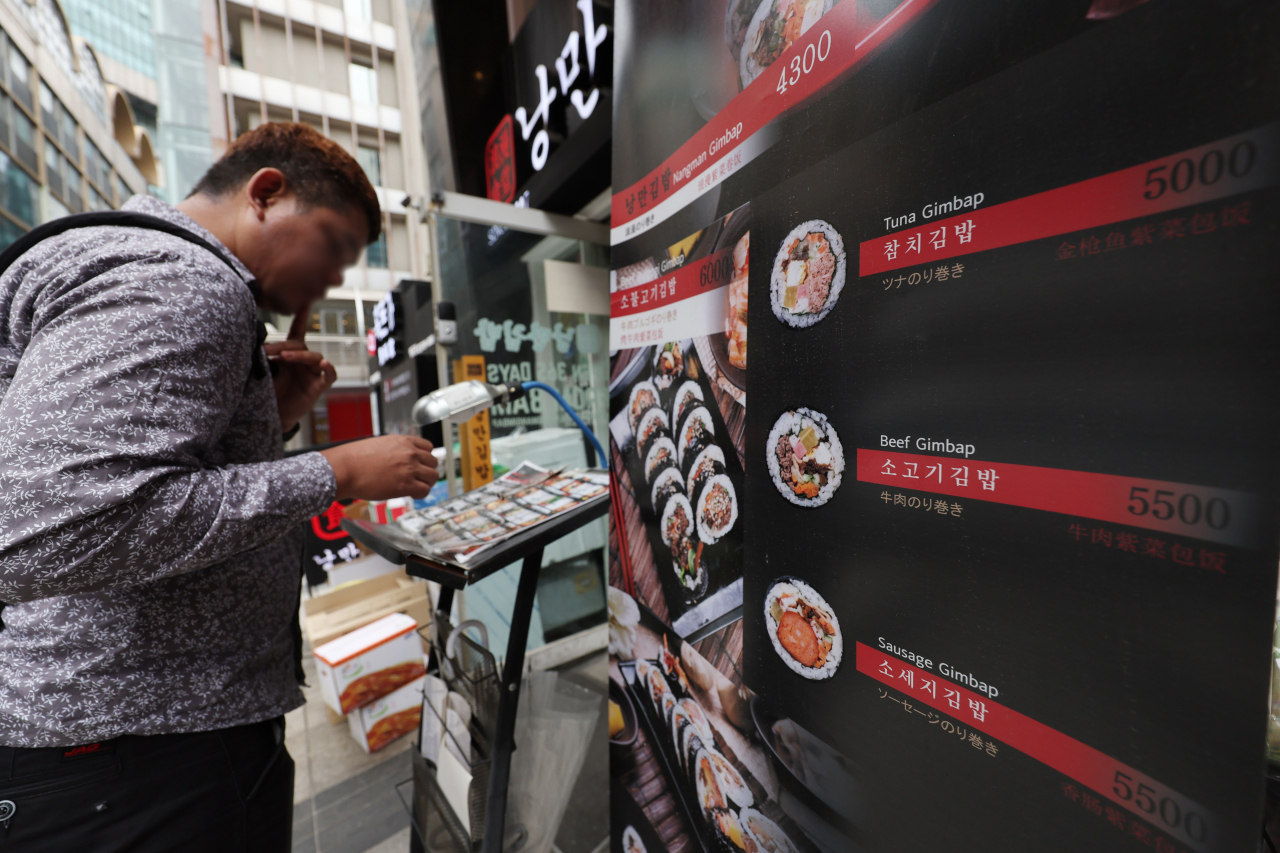
The prices of dishes at local eateries have been on the rise in South Korea, following the rising prices of agricultural, fishery and livestock products reported last week.
According to the Korea Consumer Agency, an affiliate of the Korea Fair Trade Commission, the average prices for eight major dining options have all gone up in Seoul in March, compared to March of last year.
In a bid to provide a general understanding of the dining costs in South Korea, the agency discloses the monthly average prices of the eight most sought-after dishes here: jajangmyeon, kalguksu, naengmyeon, samgyeopsal, samgyetaeng and bibimbap. The information provided since February 2014 is categorized by dish and region, such as a bowl of naengmyeon costing an average of 11,462 won ($8.30) in Seoul in March.
Naengmyeon is the dish that marked the steepest price hike over the past year, costing 7.2 percent more than it did in March 2023. The price for a roll of gimbap rose by 6.4 percent to 3,232 won, and a bowl of bibimbap rose 5.7 percent to 10,769 won.
A serving of kimchi-jjigae and rice and a bowl of jajangmyeon each became 4 percent pricier than the year before, marking 8,000 won and 7,069 won, respectively. Bowls of kalguksu and samgyetaeng went up 3.5 percent and 3.1 percent to mark 9,038 won and 16,846 won, respectively.
A single serving of samgyeopsal pork cost 19,514 won, marking the lowest increase out of the eight kinds of dishes, with 1.4 percent.
The higher cost of dining out follows price increases across the board in recent months for nearly all food ingredients.
According to the Bank of Korea, the producer price index for Korea rose for the fourth consecutive month in March. This rise is largely blamed on the 1.3 percent increase in agriculture, livestock and fisheries industry products.
Food price inflation has persisted for months. South Korea's food and non-alcoholic beverage inflation in February marked 6.95 percent, which is behind only those of Turkey and Iceland in the Organization for Economic Cooperation and Development.
With the general price of eating out on the increase here, major players in the food service industry are raising their prices as well.
Global fast food restaurant chain McDonald’s recently announced price hikes for 16 of its dishes including the Double Cheeseburger, Triple Cheeseburger and locally popular Bulgogi Burger, but leaves out other major items like the Big Mac and the Happy Meal sets. The new prices will kick in on May 2.
Pizza Hut also decided to increase the prices for some of its premium pizza dishes, such as the Cheese King and the Garlic Butter Shrimp pizzas, effective May 2.
Lotte Wellfood, one of the largest candy manufacturers in the country, initially planned to raise the price for 17 of its chocolate products starting May 1. But it decided to postpone the price hike until June, following a government recommendation.



![[Graphic News] Beer the most favored alcoholic drink by Koreans](http://res.heraldm.com/phpwas/restmb_idxmake.php?idx=645&simg=/content/image/2024/05/09/20240509050765_0.gif&u=)

